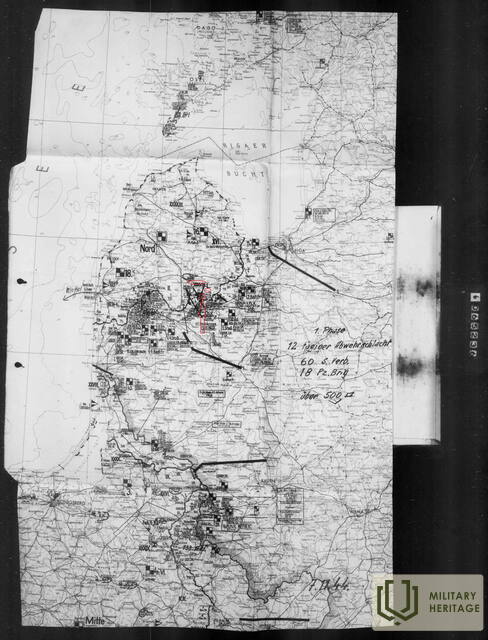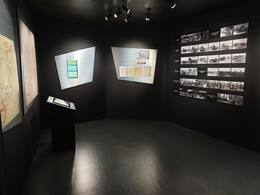Missing soldiers of the German army during the Kurzeme battles - Herrman Faul
The documentation of the German army group "Ziemeļi", which is later renamed "Kurland" during the siege of Kurzeme, still contains no clear information about approximately 50,000 German army soldiers. These soldiers are missing in action. Even today, the relatives of these soldiers are trying to find traces of their relatives and ancestors in Kurzeme, both documentary and physical. One such story is about
Herman Faul was born on January 21, 1909 in Rothelsberg, Rhineland-Palatinate, Germany.
Rank: private, later corporal. Disappeared since 27.12.1944. near "Paugibile" houses, SW of Džukste, Kurzeme
http://kurland-kessel.de/
Related timeline
Related objects
Memorial site for Hermann Faul
It is located at the crossroads of rural roads, turning off the road leading from Pienava to Džūkste.
Memorial to H. Faul, and to the nine German and Latvian soldiers who fell in the battle of 27 December 1944 (probably blown up by a direct hit from a cannon shell) and who are presumed missing since then, as no remains, documents or other evidence of their identity have been found.
Saldus German Soldiers' Cemetery
Saldus German soldier's cemetery is located on the Saldus-Ezere highway. Around 25,000 German soldiers, as well as some Latvian legionnaires, were reburied in the 8-hectare cemetery. Reburial has been taking place since 1997.
From May 1 to October 1, an exposition on the Battle of Kurzeme can be seen in the memorial room. During this period, the memorial room is open on weekdays from 9:00 a.m. to 5:00 p.m., on Saturdays and Sundays the cemetery also has a tour guide. The registers of soldiers buried in Saldus German soldiers' graves and fallen soldiers throughout Latvia are also available.
Ezere local history repository “Muitas Nams” (Customs House)
The Ezere Customs House is located in Ezere near the Saldus-Mažeikiai highway at the Latvian-Lithuanian border. The act of surrender of the German Army units ‘Kurzeme’ (Kurland) surrounded in the so-called ‘Courland Pocket’ was signed in this building on 8 May 1945. It is believed that World War II actually ended in Ezere. The customs house has an exhibit covering the events of the end of World War II and exhibits detailing the history of Ezere parish from ancient to modern days. In the morning of 7 May 1945, the commander of the Leningrad Front, Marshal L. Govorov, sent an ultimatum to the command of the army group ‘Kurzeme’ to lay down arms. The act of surrender was signed by the involved parties on May 8 and it detailed the procedure of surrender, weapons collection points, documents and information to be submitted and other practical measures.










